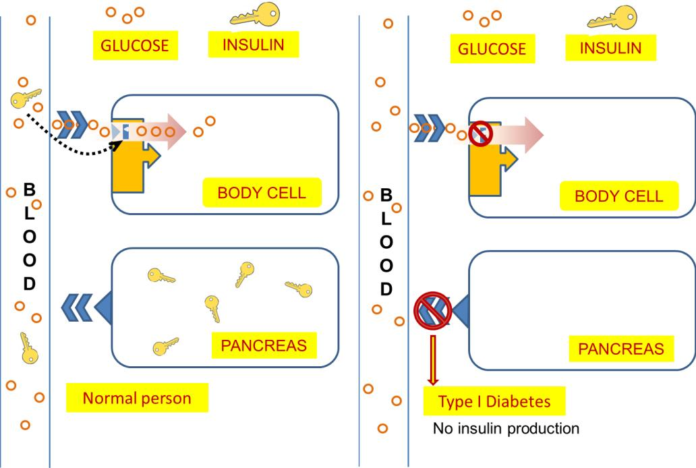
Understanding IDDM: What You Need to Know about Insulin-Dependent Diabetes Mellitus
Insulin-Dependent Diabetes Mellitus (IDDM), also known as Type 1 diabetes, is a chronic condition in which the pancreas produces little to no insulin. This condition requires lifelong management through insulin therapy, as the body is unable to regulate blood sugar levels on its own. Understanding IDDM is crucial for those diagnosed with the condition, as well as for friends, family, and caregivers who may be providing support.
What Causes IDDM?
IDDM is an autoimmune disease, meaning that the body’s immune system mistakenly attacks and destroys the insulin-producing beta cells in the pancreas. The exact cause of this autoimmune response is not fully understood, but it is believed to be a combination of genetic and environmental factors.
Genetic predisposition plays a significant role in the development of Type 1 diabetes, as individuals with a family history of the condition are at a higher risk of developing it themselves. Additionally, certain environmental triggers, such as viral infections or exposure to certain toxins, may also contribute to the onset of the disease.
Symptoms of IDDM
The onset of IDDM can be sudden and severe, with symptoms including:
– Excessive thirst and urination
– Unexplained weight loss
– Extreme fatigue
– Blurred vision
– Increased hunger
– Slow-healing wounds
– Frequent infections
If you or someone you know is experiencing these symptoms, it is important to seek medical attention immediately. Early diagnosis and treatment are key to managing IDDM and preventing complications.
Diagnosis of IDDM
Diagnosing IDDM typically involves a combination of blood tests to measure blood sugar levels and levels of certain antibodies that indicate an autoimmune response. A healthcare provider may also conduct a physical exam, review medical history, and perform other tests to confirm a diagnosis of Type 1 diabetes.
Treatment of IDDM
Managing IDDM requires a comprehensive treatment plan that includes insulin therapy, blood sugar monitoring, a healthy diet, regular exercise, and regular medical check-ups. Insulin therapy is the cornerstone of treatment for Type 1 diabetes, as it replaces the insulin that the body is unable to produce.
There are several types of insulin that may be prescribed, including rapid-acting, short-acting, intermediate-acting, and long-acting insulins. The type of insulin, dosing schedule, and method of administration will vary depending on individual needs and preferences.
Blood sugar monitoring is essential for managing IDDM, as it allows individuals to track their blood sugar levels throughout the day and make adjustments to their insulin therapy, diet, and exercise routine as needed. Monitoring blood sugar levels can help prevent hypoglycemia (low blood sugar) and hyperglycemia (high blood sugar) and reduce the risk of complications.
A healthy diet is an important component of managing IDDM, as it can help regulate blood sugar levels and promote overall health. A diet rich in fruits, vegetables, whole grains, lean proteins, and healthy fats can help individuals with Type 1 diabetes maintain stable blood sugar levels and reduce the risk of complications.
Regular exercise is also important for managing IDDM, as it can help improve insulin sensitivity, promote weight loss, and reduce the risk of cardiovascular disease. Individuals with Type 1 diabetes should aim to incorporate a combination of aerobic exercise, strength training, and flexibility exercises into their routine.
Regular medical check-ups are essential for monitoring the progression of IDDM and identifying any potential complications early on. Healthcare providers may conduct regular blood tests, physical exams, eye exams, and other tests to assess overall health and make any necessary adjustments to the treatment plan.
Complications of IDDM
Without proper management, IDDM can lead to serious complications, including:
– Hypoglycemia: Low blood sugar levels can cause confusion, seizures, and loss of consciousness.
– Hyperglycemia: High blood sugar levels can lead to dehydration, ketoacidosis, and diabetic coma.
– Diabetic retinopathy: Damage to the blood vessels in the eyes can lead to vision loss.
– Diabetic neuropathy: Nerve damage can cause numbness, tingling, and pain in the extremities.
– Diabetic nephropathy: Damage to the kidneys can lead to kidney failure.
– Cardiovascular disease: Type 1 diabetes increases the risk of heart attack, stroke, and other cardiovascular complications.
It is important for individuals with IDDM to work closely with their healthcare provider to monitor blood sugar levels, manage insulin therapy, and reduce the risk of complications.
Living with IDDM
Living with IDDM can present unique challenges, but with proper management and support, individuals with Type 1 diabetes can lead full and active lives. It is important to educate oneself about the condition, develop a comprehensive treatment plan, and seek support from healthcare providers, friends, family, and support groups.
Managing IDDM requires a significant commitment to self-care, including regular blood sugar monitoring, insulin therapy, a healthy diet, regular exercise, and regular medical check-ups. It is important to follow the treatment plan prescribed by a healthcare provider and make any necessary adjustments to ensure optimal health and well-being.
Support from friends, family, and caregivers is also crucial for individuals with Type 1 diabetes. Providing emotional support, helping with meal planning and exercise routines, and accompanying individuals to medical appointments can make a significant difference in managing IDDM and preventing complications.
In conclusion, understanding IDDM is essential for individuals diagnosed with Type 1 diabetes, as well as for friends, family, and caregivers providing support. With proper management, IDDM can be effectively controlled, and individuals with Type 1 diabetes can lead full and active lives. By educating oneself about the condition, developing a comprehensive treatment plan, and seeking support from healthcare providers and loved ones, individuals with IDDM can navigate the challenges of Type 1 diabetes and achieve optimal health and well-being.












